Digital Negative Positive Film Scanner High Resolution Usb 35mm Review
The best film scanners in 2022: give your cherished negatives and slides new life

The best film scanners are the best way to take your film into the digital realms. Whether you've got an attic full of former negatives, or you're a young lensman who got their commencement SLR afterward falling in dearest with film photography on Instagram, a moving-picture show scanner or flatbed scanner volition fast become your best friend for sharing your shots online.
In this guide, we're going to be looking at two chief types of scanner: dedicated film scanners, and general flatbed scanners. Film scanners are designed specifically for treatment negatives, which is always what you should be scanning from if possible. At that place are enough of cheaper scanners that can become through rolls of negatives very quickly, or more expensive ones that will take longer, merely reward you with a loftier-quality file, resolving every betoken of grain.
A regular flatbed scanner, on the other hand, is more general-purpose, and tin can be useful if y'all've got boxes of one-time slides or prints that yous want to revitalise and bring into life. It'south besides the better selection if you know y'all're going to be scanning other things as well as picture show, like documents. Be enlightened that if you lot're using a regular flatbed scanner, yous may need to pick upwardly an boosted holder so that it can keep the film completely apartment. This is hugely important when information technology comes to scanning film!
• See as well Best scanners for documents & photo prints | Best VHS to DVD converters
Here we've picked out x scanners for your film negatives and slides. Whether y'all're shooting color or black and white, these volition allow you lot to vividly digitise your images. We've included scanners that volition browse 35mm moving picture, 120 medium format, 5x4 sheet picture and more than, and then whatever your preferred medium, you'll accept options. Nosotros've also made sure to encompass a range of cost points, and then there are professional-level Epson scanners, and affordable upstarts similar the Kickstarter-funded Pixl-latr.
Once you've got your scanner working, you may find yourself with the urge to start shooting film once again; cheque out our guide to the all-time film to buy. We've besides got a guide to the best film cameras around too if you demand a new SLR or large-format camera. In that location'south a huge used photographic camera market and a surprising corporeality of know-how and expertise around classic film cameras.
The all-time film scanners in 2022
So what'south the best film scanner? Right now, we think information technology's the OpticFilm 8100 from film scanning expert Plustek: it extracts astounding levels of detail from your picture, is backed upward by excellent included scanning software, and it's sensibly priced. We love it. If you're later something that'll scan multiple motion-picture show frames automatically, though, and has the versatility to scan photograph prints and documents, Epson'south Perfection V600 Photograph flatbed scanner is a great pick.
If you want something affordable and have a digital photographic camera already, then cheque out the Pixl-latr. Available at a fraction of the cost of the other scanners, it provides a secure means of illuminating and holding your film so that you can scan it with a DSLR or mirrorless camera (and ideally a macro lens).
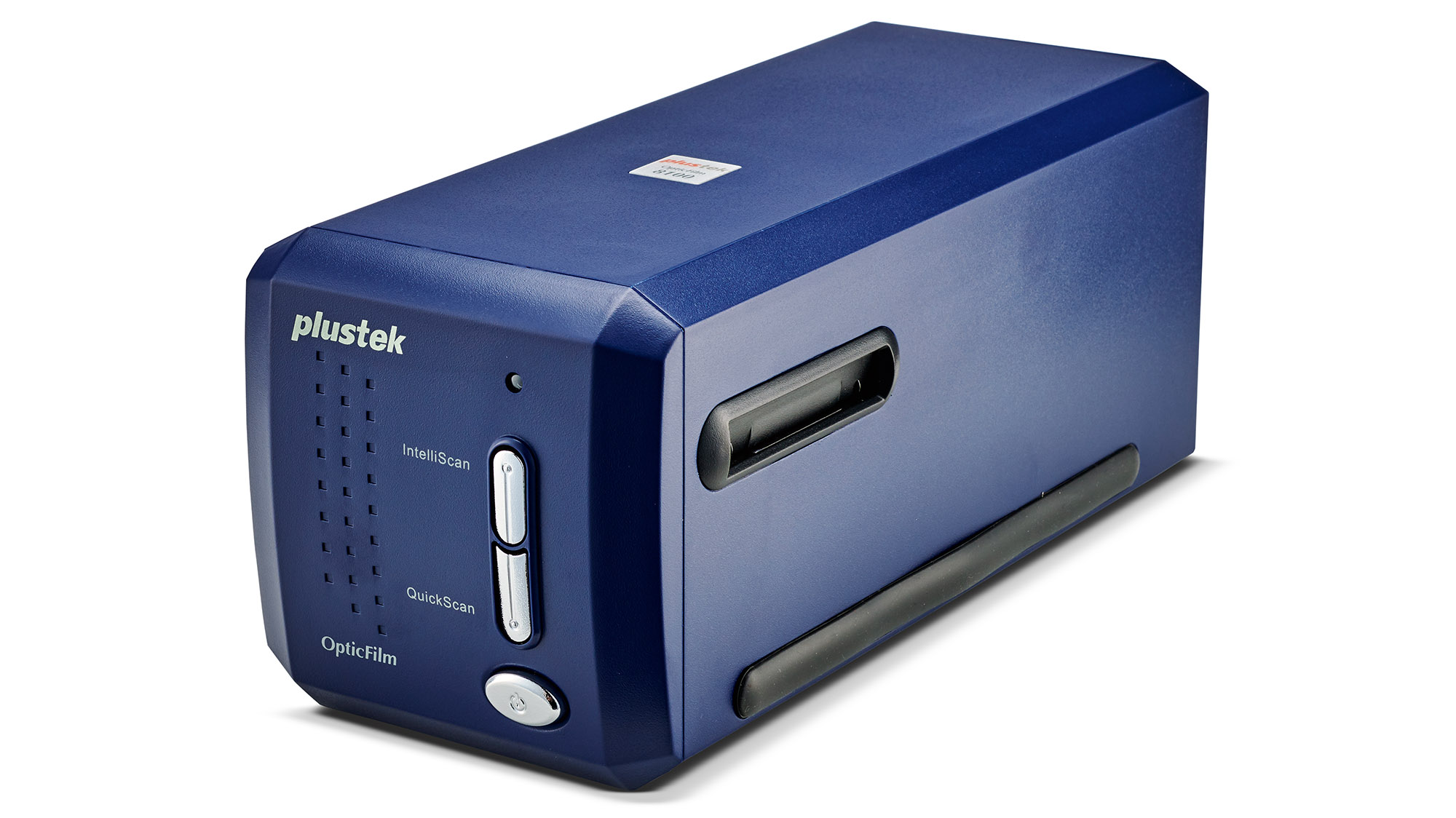
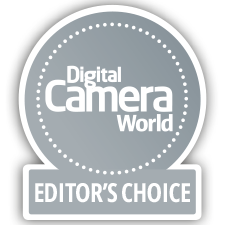
This is the baby of the OpticFilm range, nonetheless it still boasts a respectable vii,200dpi maximum scanning resolution. It'southward also a existent optical pic scanner and non only a digital camera sensor in a scanner body. This does nevertheless mean the 8100 is no speed demon. Each 35mm motion-picture show frame takes nearly 4 minutes to scan at max res, but 3,600dpi is more adequate for most film stocks and y'all'll take a scanned frame in 1 minute 20 seconds.
Though the front end panel has a QuickScan button that automatically scans and saves a frame to you figurer desktop, it's best to load upwards the bundled SilverFast software that provides comprehensive scanning options and pre-scan image enhancement. Even without messing with the settings, and scanning at 3,600dpi, the 8100 is in a league of its own for browse quality, extracting bags of particular from our 35mm negs and transparencies. It also lets you scan the entire film frame with no overzealous cropping. The 8100 can struggle to reveal every detail in the shadow areas of loftier-contrast 35mm slide positives, but this is our simply nitpick.
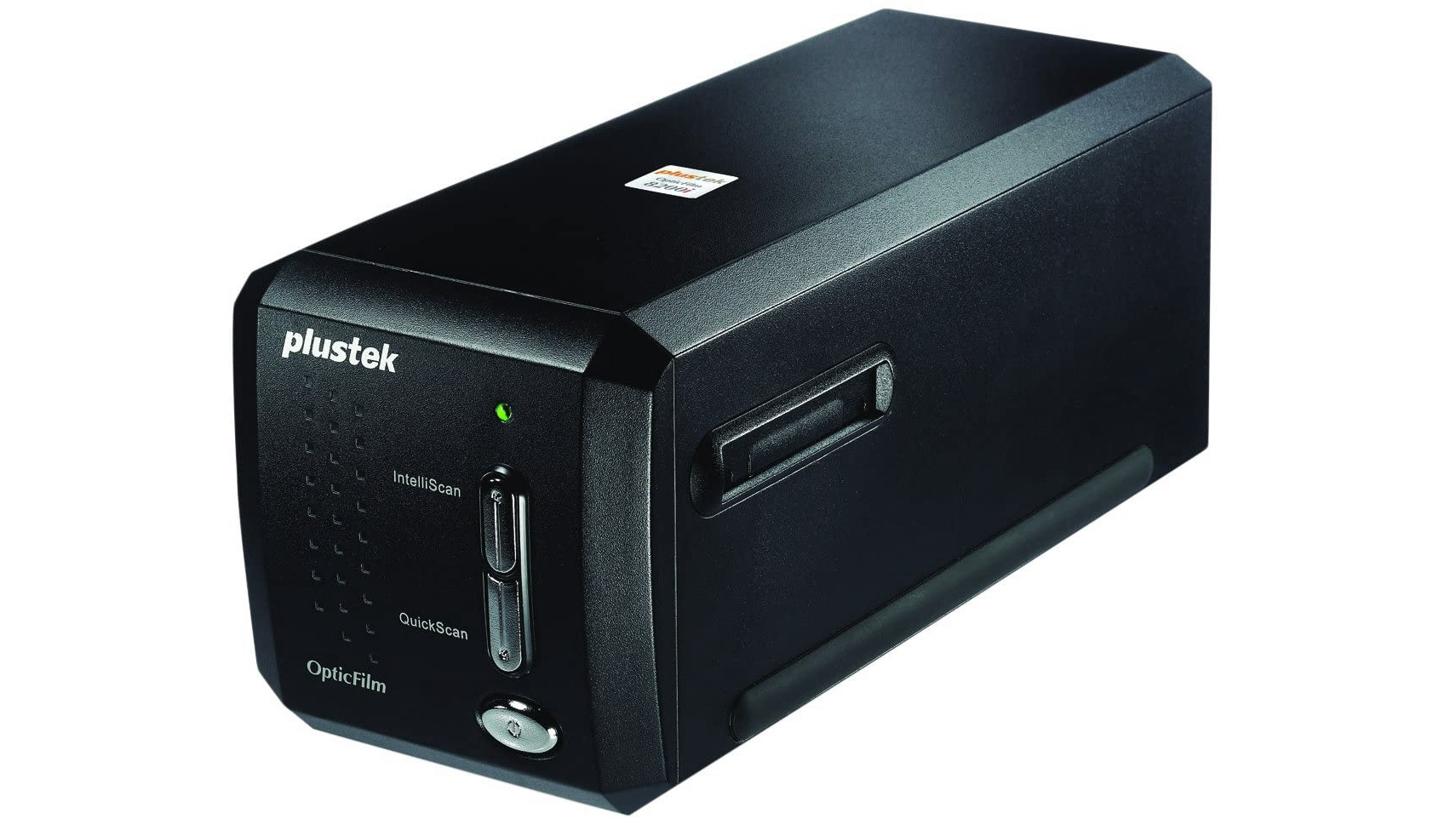
Apart from its black rather than bluish end, the OpticFilm 8200i SE could be mistaken from its baby 8100 sibling. It's near identical on this inside too, merely that'due south no bad matter, every bit that means you lot're assured height-notch scanning quality, providing y'all're prepared to wait a while when using max 7200dpi scanning resolution.
At that place's actually only 1 central feature that separates the 8200i SE from the 8100, and that'south its defended infra red scanning channel. Combined with the iSRD characteristic in the bundled SilverFast scanning software, any dust and scratches on your negs are automatically detected and then removed from the digital browse - clever stuff.
The downside? In some places, the 8200i SE can cost around twoscore% more than the 8100, making it rather less of a bargain. Only if you regularly scan multiple negs that are likely to demand dust and scratch removal, so the 8200i SE could be a existent time-saver and worth the premium. The price difference between the 2 scanners is smaller in the US, making the actress convenience of the 8200i SE very tempting.
There is too a Plustek OpticFilm 8200i Ai bachelor, a flagship model that adds colour calibration software into the package - useful for colour transparency scanning, albeit at a higher price.
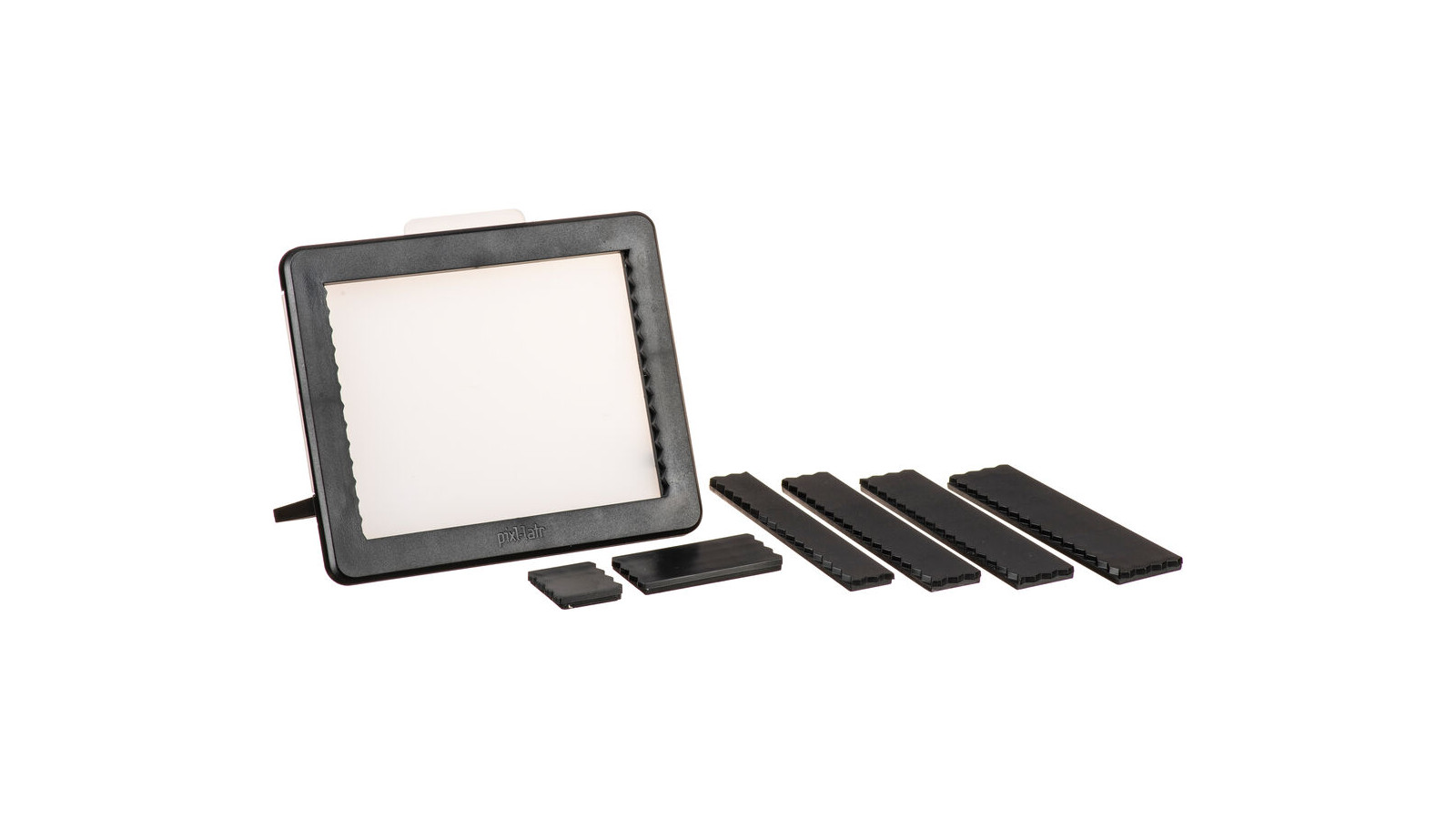
Every bit you tin can see from a glance at this listing, film scanning tin be an expensive process. The PIxl-latr is one of the most recent devices aiming at disrupting the market; it'southward more than a scanning-assistant device than a scanner, requiring a lightbox and a photographic camera with a adept lens in order to work. Substantially information technology holds your motion picture flat against a translucent diffuser, allowing yous to evenly distribute light across the film plane for a smooth, fifty-fifty scan.
Every bit mentioned, a lightbox is the all-time choice for light source, though if you're in a tight spot pretty much annihilation will exercise, from a bedside lamp to a tablet with its screen brightness turned all the manner upwardly. Pixl-latr offers a number of 3D-printed parts for helping you get the about out of the production, such equally holders designed specifically for certain sizes of slide. Yous'll get best results from a macro lens, but again, if you lot don't accept 1, a decent 24-70mm will work.
Information technology's non the fastest way to browse moving picture, and if you have a lot of rolls to process, you might want something a bit snappier. Just its asking price of about $50 makes information technology the most affordable choice past far, and the results y'all can get with it make it fantastic value for money.
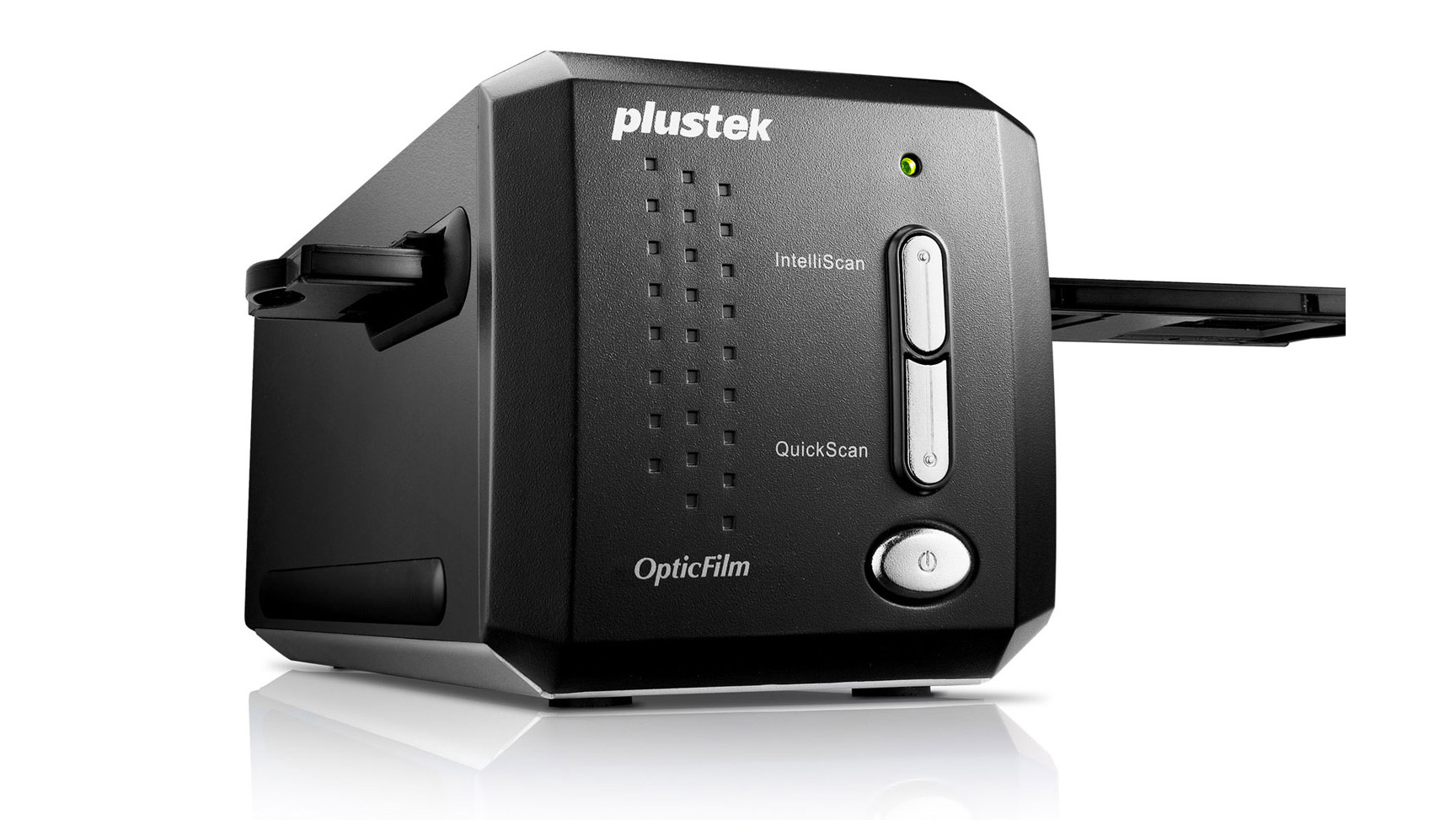
We couldn't have a list of the all-time movie scanners without including Plustek's flagship 8-serial model, the 8200i Ai. Information technology looks identical to the cheaper 8200i SE (at #2), and for the most part it is indeed the same scanner, which means you go the same clever infra-red dust detection and removal tech, equally well as top-notch scanning qualiy.
The 8200i AI differentiates itself primarily past including more advanced SilverFast Ai Studio software. This packs pro-grade scanning customisation features similar a sixteen-fleck histogram for a clearer, more true-to-life preview of scan quality. In that location's as well an Expert Manner if you desire to spend a little extra time fine tuning scan quality settings or use protecting layers. The Ai Studio software fifty-fifty includes an IT8 color scale target to ensure colors in the digital scan preview, the browse itself and a print of that scan all match each other
Naturally, these extra features command a significant price premium over the 8200i SE, so if y'all don't intend to delve into advanced scanning settings each time you wan to digitize some negs or slides, the extra outlay is tough to justify. Still, if you really want to ensure those cherished memories are scanned equally perfectly every bit possible, and y'all've got the fourth dimension to do the necessary fine tuning, the OpticFilm 8200i AI could be for you.
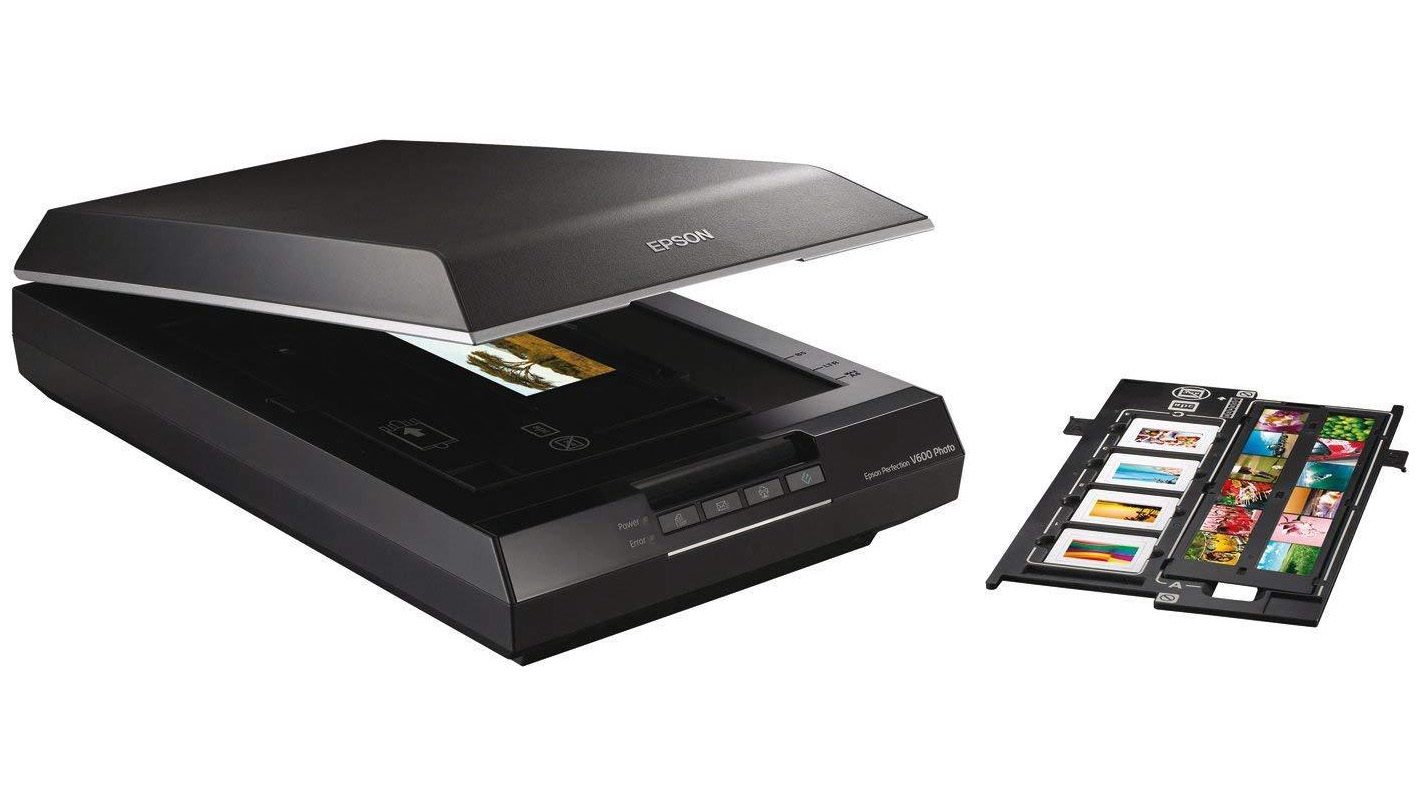
Flatbed scanners are traditionally idea of as a more versatile but less finessed alternative to a dedicated film scanner. However, the V600 is impressively designed to cater to picture photographers. Naturally information technology tin scan photos and documents, merely it includes holders for 35mm moving-picture show, 35mm slides, and 120/220 medium format picture show.
Scanning resolution can get as loftier as a whopping 12,800dpi, simply you'll likely observe 3,200dpi more than enough for your film stocks, producing a digitized prototype equivalent to effectually 12.2MP. Y'all might imagine that laying out up to a dozen 35mm picture show frames over the flatbed would effect in fast scanning, but the V600 Photo however scans each frame individually – admitting automatically – and takes around one minute per frame at three,200dpi. Scanning with Digital Ice automated dust and scratch removal enabled merely adds effectually 20 seconds per frame.
Results are superior to the Plustek OpticFilm 135 dedicated moving picture scanner, with noticeably more detail, plus improve default colour and contrast. However the V600 can't lucifer the top-ranking Opticfilm 8100'south power to extract every speck of detail.
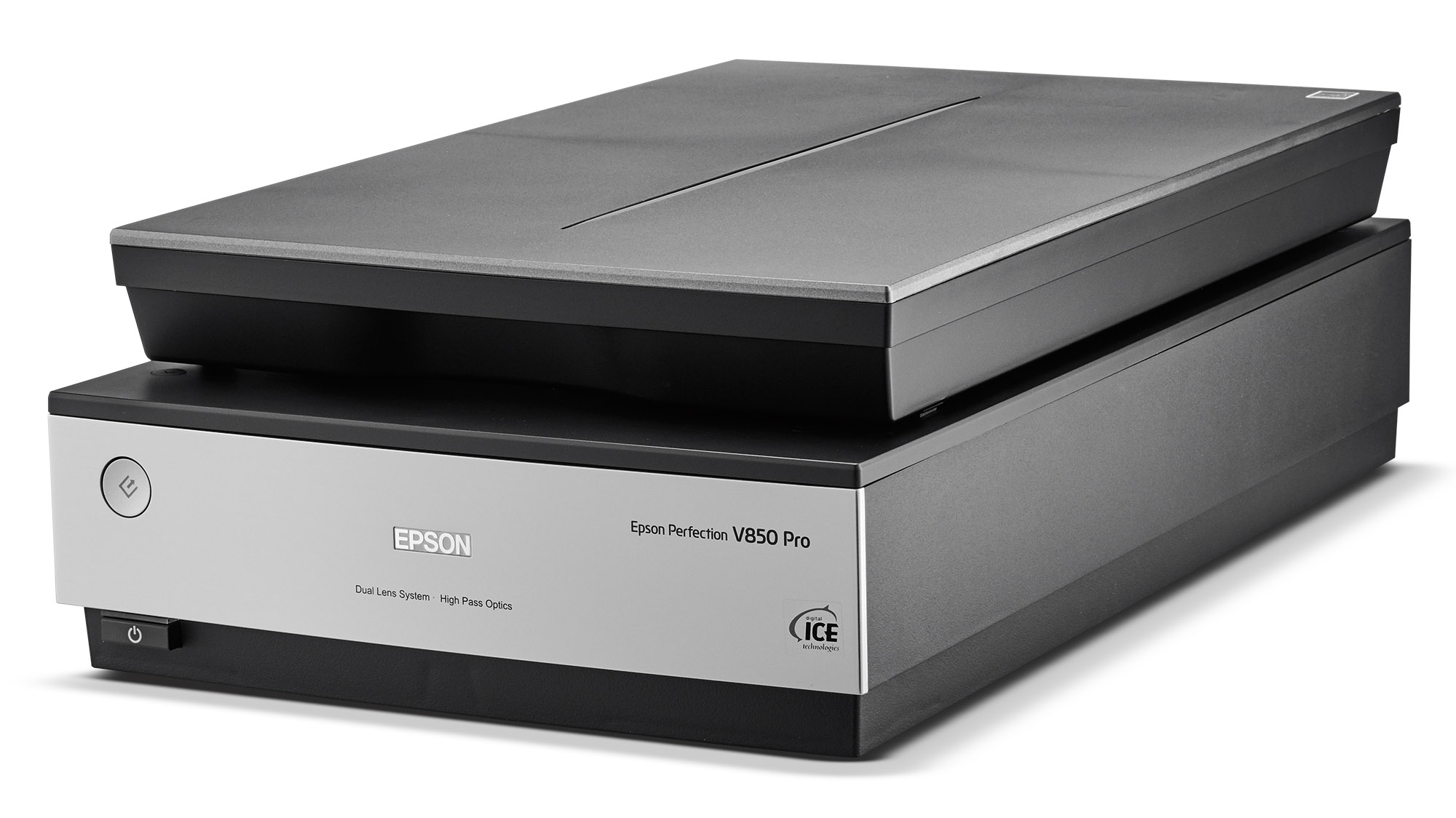
Positioned at the pinnacle of Epson's scanner range, the V850 Pro is aimed squarely at film fanatics wanting the best possible conversion to digital images. Its eye-opening price tag is a consequence of a dedicated scanning lens designed especially for film, and information technology being bundled with not one only two sets of picture show holders. The 35mm film strip and 35mm slide holders are an appreciable step upward in quality from those included with the V600 Photograph.
The scanner itself is also an absolute beast and feels similar a premium product. Like the V600, resolution tops out at 12,800dpi, but once more, it's rare y'all'll demand such extreme resolving power. At 3,200dpi, the V850 does not perform significantly faster than the V600, but footstep upwards to higher resolutions and this summit-tier model pulls ahead, taking just ii minutes 30 seconds to browse a 35mm frame at 12,800 dpi.
However there's precious little to separate the V850 from the V600 when it comes to scan quality. Both deliver fantabulous results that are almost duplicate, making the V850's hefty price premium tough to justify unless y'all'll actually benefit from its extra high-res scanning speed.
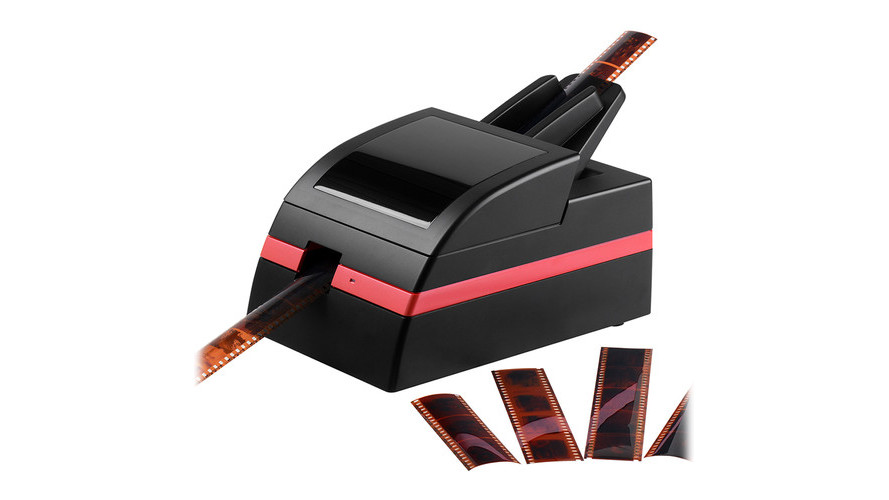
If you accept a lot of 35mm film to batch scan, the Pacific Prototype PowerFilm Scanner is the style to get the job done. It's a beast of a scanner that does basically one job but does information technology exceptionally well and efficiently. But load your unmounted strips and it'll scan up to ten of them with a single command. You also have a pick between high-resolution 24MP scans or quicker 6MP scans if you don't need every image in pristine quality. These quicker scans can accept as little as 24 seconds each, so this is an ideal style to digitize an archive equally efficiently equally possible.
All this talk of efficiency does confute the fact that the Pacific Image PowerFilm Scanner is also very proficient at what information technology does, producing images of excellent detail and quality. Pacific Image's proprietary infrared cleaning engineering science, MagicTouch, likewise works to remove dust and blemishes for a clean final image that'due south ready for printing. A fantastic tool for working through an archive.
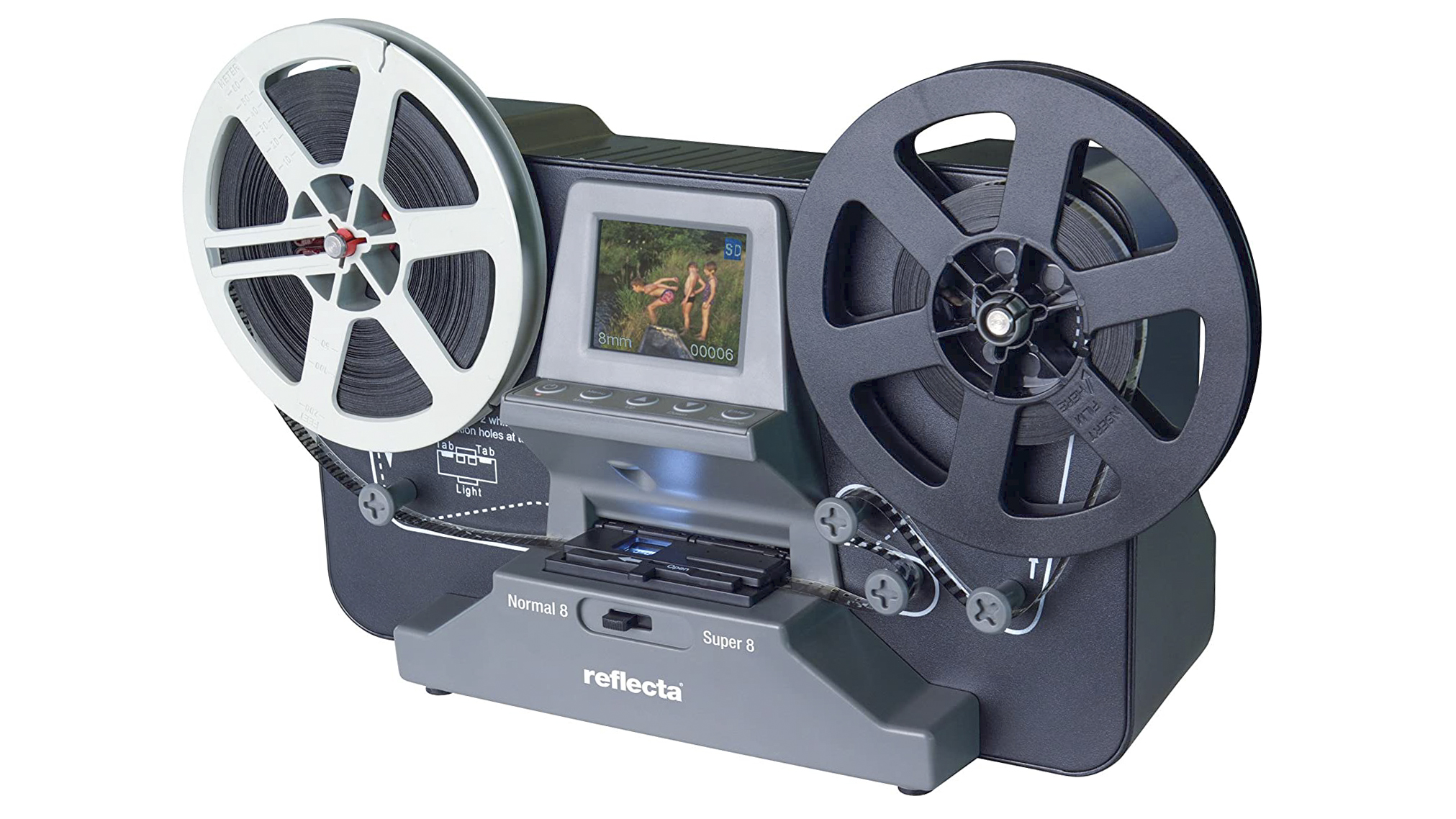
Digitizing old reels of cine picture show used to be much more than complicated, as you needed to find a working projector, every bit well every bit a video camera and a screen. But this ingenious device does it all in one – allowing yous to convert your Super 8 and normal 8mm cine films into MP4 digital files. Sold under the Reflecta, Magnasonic or Eyesen brand names (depending where y'all store), it converts moving-picture show on 7in, 5in or 3in reels – and saves the output onto SD memory cards. There is a modest 2.3in LCD so you tin can run across the film before and during recording.
Scanning is done at two frames per second – so a 3-inch 50-foot reel will have most half an hour to digitize. In one case recorded, the unit can playback the footage to your Television receiver so anybody can come across it on the big screen. Unfortunately there is no back up for audio, so if the flick has a soundtrack this is not recorded.
5 things to look for in a film scanner
1. Pixel perfect
Don't be swayed past sky-loftier scanning resolutions. Unless you're digitizing extremely slow picture speed, three,200dpi volition be more than enough. Moving-picture show does not have the same resolving ability as today'southward sensors.
2. Film or flatbed?
Dedicated moving picture scanners can offering impressive epitome quality, but a decent flatbed scanner offers extra versatility and scanning convenience.
3. Software features
If you want the best possible results, skillful scanning software is a must. It'll let you fine tune every element of the scanning procedure.
iv. Ease of use
Standalone film scanners that save directly to a memory card are great for convenience, but don't await the image quality to be anything special.
5. Hold on tight
Cheaper scanners can often exist allow down be tacky picture holders that are tricky to use and can compromise the quality of the final image.
Also read:
- The best film cameras today
- The best 35mm flick, coil film and canvass moving-picture show
- Best slide viewers
- Best darkroom equipment: enlargers, processing tanks and print trays
- Best scanners for documents & photos
- All-time book scanners
- The best camcorders
- How to scan moving picture
- The best photo printing online
Related manufactures
farringtoncalsomed.blogspot.com
Source: https://www.digitalcameraworld.com/buying-guides/the-best-film-scanners
Post a Comment for "Digital Negative Positive Film Scanner High Resolution Usb 35mm Review"